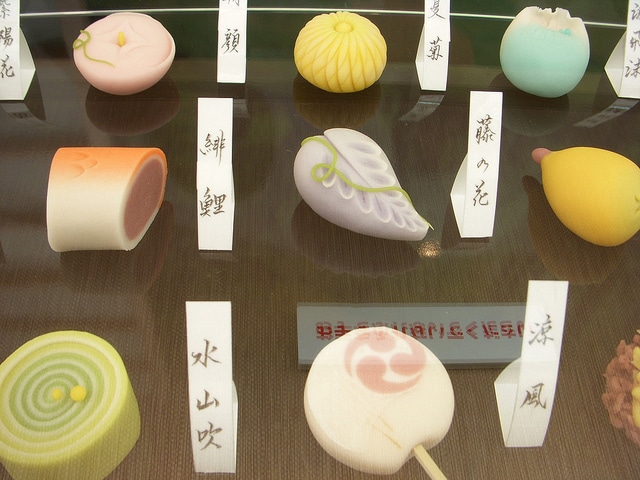
Wagashi. Image via amo_designare.
When ordering dessert in Japan, don’t expect fudge brownie sundaes or Snicker marshmallow cheesecake. Instead, you’ll more likely be indulging in some simple but delicious wagashi, or typical Japanese sweets. Often served with tea, these confectioneries are made with mochi, azuki bean paste and fruit and often have a soft, mold-able texture.
This shouldn’t be too much of a surprise, as Japan is an overall healthy society. In ancient Japan, people ate fruit and nuts to satisfy their cravings for sweets and add nutritional value to grains like rice and millet.
What’s also interesting about wagashi is the part it plays in the traditional Japanese tea ceremony. The focus of the ceremony isn’t really about making tea, but about the aesthetically-pleasing manner in which the Teishu (tea host) prepares it. Moreover, it’s important to make guests feel welcome in accordance with the season.Wagashi not only adds sweetness to the palate to combat the bitterness of the green tea, but is also made to reflect the season, i.e. maple leaf shapes for fall and plum flower designs for spring. In essence, it’s not just a dessert, but an art.
Have you ever tried wagashi? What was it like?

Jessica Festa is the editor of the travel sites Jessie on a Journey (http://jessieonajourney.com) and Epicure & Culture (http://epicureandculture.com). Along with blogging at We Blog The World, her byline has appeared in publications like Huffington Post, Gadling, Fodor’s, Travel + Escape, Matador, Viator, The Culture-Ist and many others. After getting her BA/MA in Communication from the State University of New York at Albany, she realized she wasn’t really to stop backpacking and made travel her full time job. Some of her most memorable experiences include studying abroad in Sydney, teaching English in Thailand, doing orphanage work in Ghana, hiking her way through South America and traveling solo through Europe. She has a passion for backpacking, adventure, hiking, wine and getting off the beaten path.








